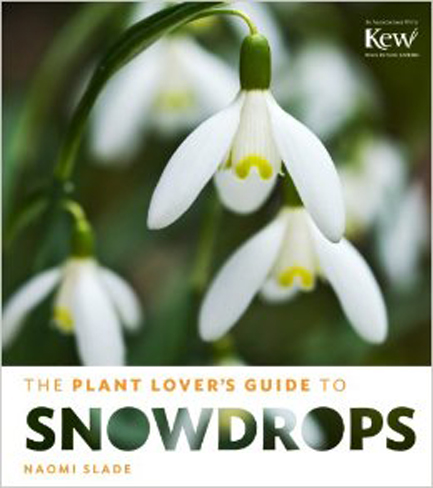The Plant Lover's Guide to Snowdrops, Naomi Slade, Timber Press, (April 22, 2014); 254 pp, hardcover; publisher’s price $24.95, Amazon price: $18.27
This book confirms the fact that in the heart of every gardener lie the primal cells of a galanthophile.
Yes, we have heard the mutterings: "they all look the same", but a quick flip through the photographs is enough to convince the reader that the Brits may be on to something. This something has been going on for a few centuries in Great Britain, but is now being embraced by a growing number of North Americans.
Cutting to the chase, the reason to buy the book is the 60 pages dedicated to approximately 60 species and cultivars. Each of these is described by height, flowering time, cultivation difficulty, and distinguishing features. This is followed by one to two paragraphs dedicated to the origin of each species or cultivar. A color photograph filling one half to a full page accompanies each galanthus. In these pages, the reader can begin to appreciate the uniqueness of such lovelies as “Lady Elphinstone,” “Yaffle,” “Diggory,” and the simple elegance of species such as fosteri, gracilis, and plicatus.
Often, books dedicated to a specific genus are collected for a future reference. These are not often read cover to cover. "The Plant Lover's Guide to Snowdrops" entertains the reader with discussions of the history of collectors and the stories regarding various episodes in the history of galanthomania. (Yes, there is lying, thievery, money, and exotic lands involved in these tales). There is also useful information on cultivation, design, and plant sources. Interspersed throughout the book are amusing interviews with famous galanthophiles, those souls that have been meandering for decades through snowdrop land. You may be next.
As winter approaches, imagine little glass vases sparkling with pure white pearl flowers, inner petals edged in perfect little green hearts, sitting on your windowsill in January. Perhaps a walk in a snowdrop woodland in February is in your future. If you read the book you will have a better understanding of the magnetism of this genus, and more confusion about how money seems to fall out of your wallet when a galanthus you don't possess becomes available.
Terry Laskiewicz has a one acre garden, part woodland, part alpine slope in southwest Washington along the Columbia River. In the greenhouse, primroses well as fritillaria and many other bulbs are cultivated, many grown from NARGS seed.
A special thank you to Timber Press for donating the review copy of this book.

